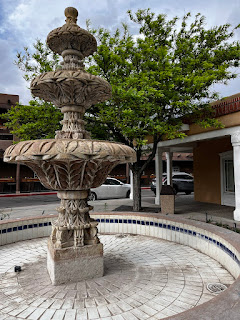So some of you who haven't travelled long distances in an electric car might be wondering what it's like. Certainly, we keep getting approached by folks at chargers who exclaim at how far away from home we are, and who have questions about our car's range and what the trip is like.
I guess the first thing to clarify is that in some ways the actual numbers associated with our car's range is irrelevant. Unlike a gas vehicle, in an EV you don't just head in a random direction and travel until you need to refill your gas tank. Chargers just aren't that common yet. Instead you basically travel from charger to charger and the spacing between chargers dictates how far you go before stopping. The availability of chargers also dictates exactly how you get from point A to point B and where you travel. There are still places you just can't go.
So the first step in a long EV road trip is planning your route.
Fortunately, Teslas can do this for you very easily. You just press a button on the steering wheel and say "Navigate to X". This can even be "Navigate to Hillsboro Texas" when you're in Vancouver BC. It's a miracle of modern technology that the car will figure out a route for you for the entire cross-continent trip in only a minute or two, complete with every charging stop that you need to make along the way. It will even include an estimate of your arrival time at each place (making the assumption that you travel the speed limit the whole way and that the only stops you make are to charge).
For simple trips, at this point you're done. Steer your car in the first direction indicated by the navigation system and continue until you reach your destination.
For longer trips, you might want to do a little more investigation before you head out. For example, we brought camping gear along on this trip and a telescope, which means that we needed to put the pod on.
The pod affects the car's aerodynamics and therefore its range. The car's computer will eventually figure this out and adjust its estimates, but at the start of the trip it's going to assume we're driving a standard Model 3. That means that the possibility exists that the navigation system could accidentally take us somewhere where we could run out of juice and not be able to make it to the next charger.
So we also use a 3rd party app to check Tesla's routing. The A Better Route Planner (ABRP) app allows you to manually adjust the power consumption that it uses for your car when it does its routing (which we can estimate ourselves from previous trips with the pod). We can also tell ABRP about all of the EV charger adapters that we own (almost a complete set!) so the app can plan a route that includes non-Tesla chargers too. (The Tesla route planner only knows about Superchargers.)
We can then look at the route in more detail and check for any problematic sections, like ones where we need to charge to 100% to get from point A to point B, or one where we arrive with less than 10% charge. What's wrong with charging to 100% or arriving with less than 10% you ask? Well, charging to 100% takes forever, because the battery fills more and more slowly as it gets close to full. And then there's the possibility of wind. Strong headwinds can significantly reduce your range (while tailwinds can of course extend it), so any segment where you need to be close to 100% to make it to the next charger is higher risk.
When we find a problematic section, we look around for alternatives. Are there chargers between the recommended charge points where we could stop if necessary? Is there an alternate route available that's lower risk? For example the standard trip plan for our trip south routed us east through Wyoming. However, that part of the trip included several segments where we needed to charge to a very high percentage to reach the next charger, and there was absolutely nowhere in-between to top up if needed. But if we instead diverted a bit further south and travelled east through Colorado, there were lots of alternate chargers and the entire trip would take maybe half-an-hour longer in total.
Travelling through Colorado made way more sense.
So, in 2024 long road trips in an EV are definitely possible, but still require more planning than similar trips with an internal combustion engine. On the upside, when's the last time filling your gas vehicle cost you $8-15? And we're much happier producing fewer carbon emissions in our travels.













































